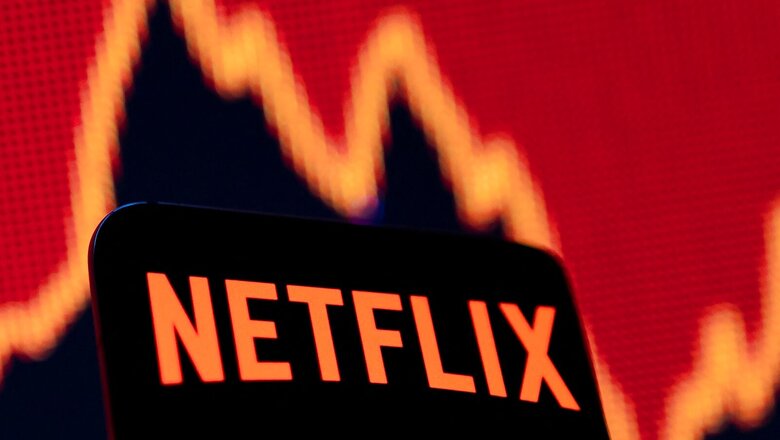
views
A few days ago, in the course of a conversation with a filmmaker friend, this writer got to learn that most streaming platforms (read Netflix) were done with their attempts to be creative (read signing big marquee actors without a concept to hoot, push agendas that seem alien to the local audiences, etc) and wanted some good ideas to explore.
The grandstanding of Netflix and ilk, where they believed that they knew what was best for the local market, is now practically a thing of the past. This isn’t limited to India per se, something that is more than apparent from how Netflix has been fast losing both subscribers and its stock value.
In an April 2022 report, the company reported a loss of 200,000 subscribers in the first quarter of 2022, its most significant loss in over a decade. Between April and June 2022, Netflix lost another 970,000 subscribers. Netflix’s stock has been steadily declining, too. It has gone from $300 billion to under $90 billion in less than a year, a loss of over 70 percent of value.
Experts believe such a bend in the road could have to do with various reasons. However, one of the significant factors contributing to this loss is how a giant such as Netflix has taken it upon itself to set the local agenda in terms of entertainment. Be that as it may, the once craving for a choice audience has now become vocal and told the company in more ways than one that being woke isn’t cutting it anymore.
Few companies have managed to shift out of their core business, an area where they were not just industry leaders but, for all practical purposes, synonymous with the business and adapt to changing times in the same core business. Starting as a home DVD rental outfit, Netflix survived the critical change in the core aspect of the trade it was within — the shift from physical products such as DVDs to online — and became the market leader in its new avatar.
It took on the cinema industry by pumping mega bucks into global productions that would never be released in a cinema near you. It attracted some of the biggest names in the business to partner on dream projects. When the traditional film festivals refused to consider films produced by online streaming giants due to non-theatrical runs, Netflix bought a chain of cinema halls to check that box. There was nothing that could go wrong for it, and soon it started setting the agenda — what it didn’t feel cut in terms of social messaging (read wasn’t woke enough), it rejected it.
More than external factors such as increased competition and, more significantly, losing content to other platforms in the form of a backlist or new material, is there an internal factor that has caused more considerable harm to Netflix? Believe it or not, the streaming giant’s ‘wokeism’ could be a reason why subscribers are abandoning it. Netflix had come under much fire following its show Cuties that objectified prepubescent girls in September 2020, which also started the process of subscriber cancellation.
The backlash over its sexualised portrayal of children was accompanied by reports of Netflix also surpassing the film in search results. It went on to stand by the film and called itself a ‘conduit for content’. In October 2021, many Netflix employees expressed a problem with the platform producing and showcasing comedian Dave Chappelle for his transphobic comments. A few months later, in an internal memo, Netflix surprised observers by asking employees who were offended to leave if they found it hard to support the content.
Pushing the envelope is a common creative refrain. There is a time and place for it, but things tend not to be so black and white when seen from a broader perspective. On the face of it, Netflix might be a space for content but the sheer power it exudes when it comes to budgets and the access it has to television screens makes it more than a mere exhibitor.
It can set the narrative, and this is what it was trying to do with shows such as Cuties — imagine a movie criticising the sexualisation of young girls using images of young girls, some of them 12, in crop tops and striking provocative dance poses. It makes you see the very thing it asks you not to see.
A few years ago, Netflix did not have competition for local content, but that’s a thing of the past. With people preferring the quality of the content as opposed to the production level — Panchayat and Nirmal Pathak Ki Ghar Wapsi — are only two recent examples. Netflix and the likes need to understand that simply setting an agenda that might have worked in some corner of the world, for however short a period, in another part of the world might be such a great idea.
The writer is a film writer and historian. The views expressed in this article are those of the author and do not represent the stand of this publication.
Read the Latest News and Breaking News here



















Comments
0 comment